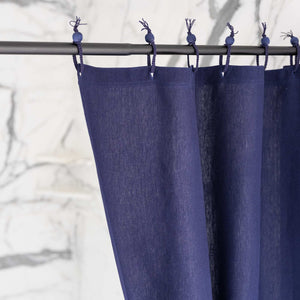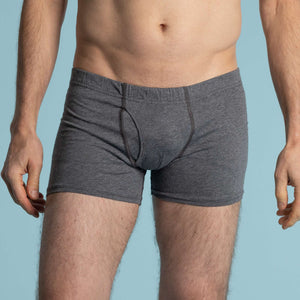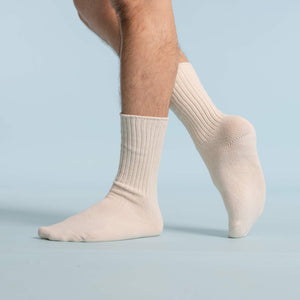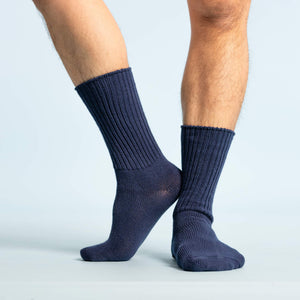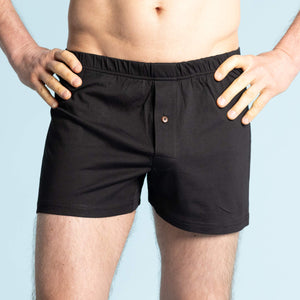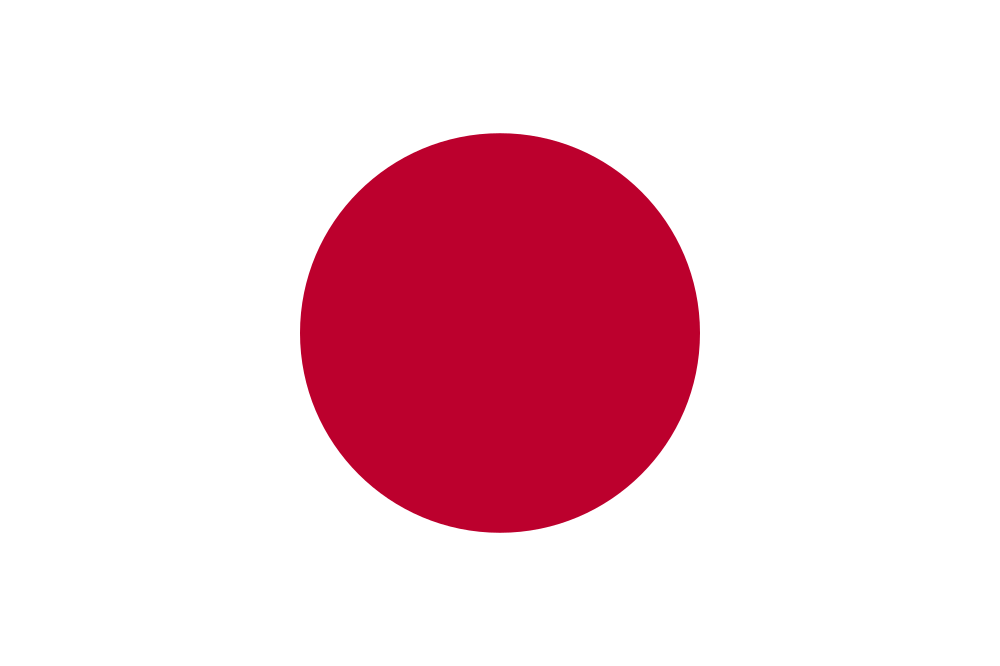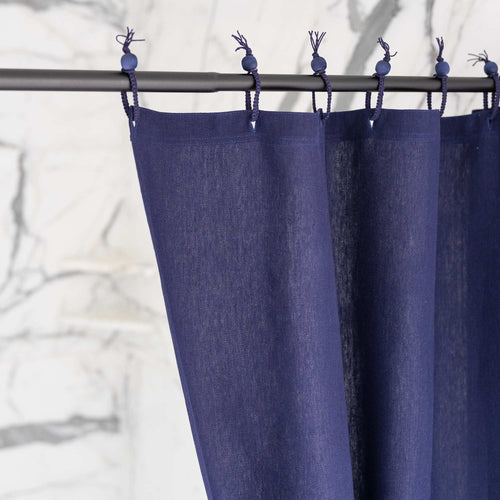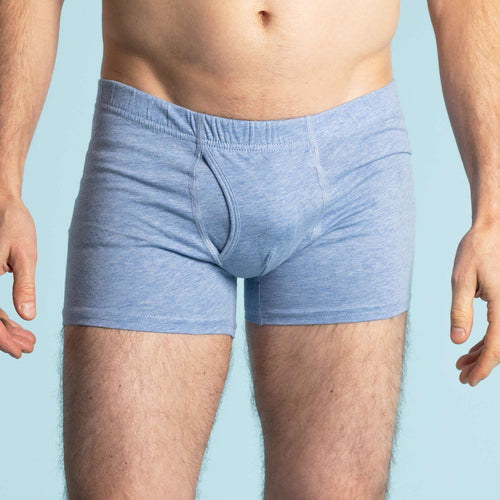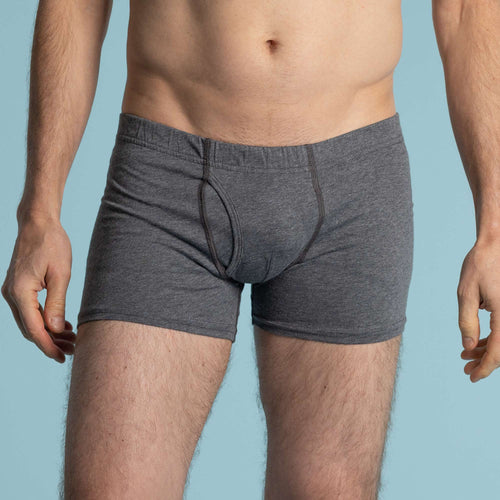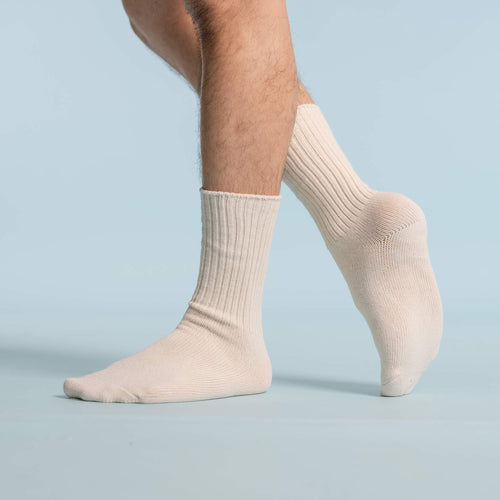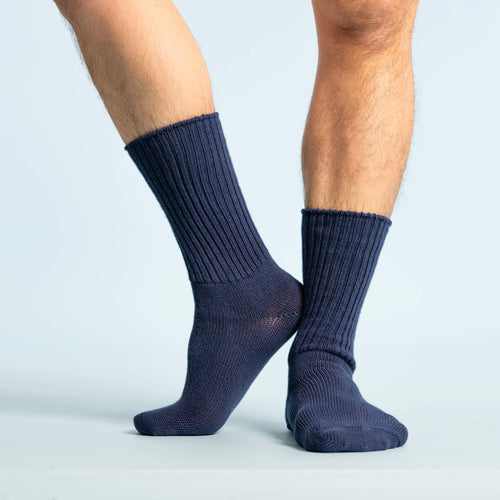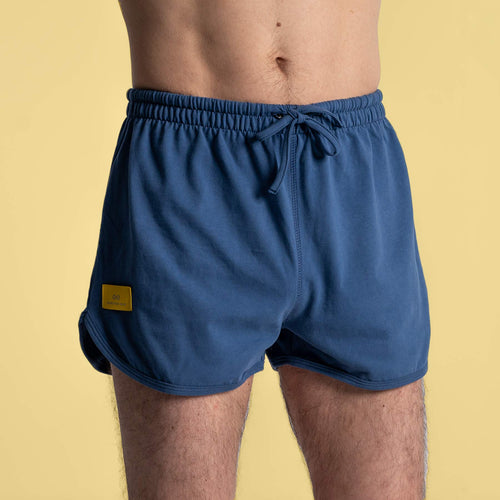Cannabis Sativa Industrial Hemp Information
Why organic hemp?
If you’re left on on an island with one plant, make it organic hemp. In 20 years on our island homestead, we made many of the products we offer today with traditional skills and organic hemp. Why hemp? It’s hard to know where to start.
Hemp is…
A crop of a thousand uses.
Different parts of the hemp plant make a wide variety of products. Hemp fiber makes ropes, textiles and clothing. Hemp oil can be used for things like soaps, care products, natural rubber, biodegradable plastics and fuel. You can even eat parts of the hemp plant. But more on that later.
Marijuana’s cousin.
Getting high is just about the only thing you can’t do with hemp. While it is a cannabis plant, hemp is less than 0.3% THC. Last year, the US made hemp an agricultural crop for the first time since it was outlawed in 1937. Why was it illegal? Most likely due to its misunderstod association with marijuana.
Sustainable.
Hemp isn’t just convenient for people. It’s a welcome change for the planet. A Stockholm Environment Institute study found that hemp needs roughly 50% less water than cotton to thrive. Other studies suggest that hemp cleanses soil of pollutants as it grows (read more here). We can easily grow our own hemp without chemicals or pesticides, since hemp is naturally resistant to pests.
Durable.
hemp makes ropes with a stronger tensile strength than any other natural fiber. In World War II, the US government used hemp for parachutes. When other fabrics would wear out, hemp clothing ages like wine and actually softens, becoming more comfortable the longer you wear it.
Breathable.
Hollow-cored fibers make hemp clothing extra-breathable, so it regulates temperature better than cotton. That’s especially handy for workout gear, underwear or socks. If you’re caught in freezing rain, a hemp shirt won’t soak through and stick to the body like cotton or synthetics. Hemp fibers wick away moisture naturally, which helps fend off sweat and odors.
Healthy.
Since hemp was legalized in the US, we’ve learned more about the health benefits of hemp-derived CBD oil every day. The FDA recently approved a CBD drug to treat epilepsy. But that’s not all the nutrition we get from hemp. Hemp seeds are packed with protein, and hemp milk is a healthier and more sustainable alternative to dairy.
Hypoallergenic.
Wearing hemp is healthier, too. Especially for people with chemical sensitivities, like our founders. Hemp doesn’t irritate their skin the way many synthetics or chemicals do. And since we grow our hemp without pesticides, you don’t have to worry about it being contaminated by agricultural chemicals.
Historic.
Hemp may seem like today’s fad, but it’s been around for... well, forever. Archeologists have discovered hemp fabric that’s 10,000 years old. Rembrandt and Van Gogh both painted on hemp canvas with hemp oils. In the 18th century, Thomas Jefferson and George Washington grew hemp for rope and textiles. Much later in American history, Henry Ford looked into a car with hemp plastic.
Looking for more on organic hemp? We've just gotten started! Keep scrolling.
___________________________________________________________________________________________________________________________________________________________________________________________________________________
Cannabis Sativa Hemp / Chanvre & Hanff Information
Hemp has such a long, diverse, and compelling history that it boggles the mind. Hemp has been grown in almost every corner of the earth. Hemp has left a legacy even in places where it is currently, temporarily illegal (the illegalization of hemp is very recent in the larger picture of human history). It's just a matter of time before hemp once again becomes an essential part of virtually every country's agriculture. To date, 19 out of 50 states in the US have made commercial hemp cultivation legal in some measure. Hopefully, by the time you read this, even more states have joined the hemp bandwagon. Eric DaHemp Man has compiled heritage photos and videos showing hemp in all corners of the earth; he has been kind enough to want us to share them here. Aren't they a treasure? We think so. We will be posting heritage videos as well.
Hemp fiber makes for comfortable, durable, stylish and distinctive clothing (but it's not just the comfort that makes hemp fiber clothing special -- please read on to find out why), and hemp seeds make for highly nutritious and utterly delicious foods, teeming with live enzymes and many other essential nutrients like chlorophyll. The hemp plant is an easy-to-grow annual plant that doesn't require pesticides or herbicides to thrive. It is truly mind-boggling to think what the world would be like in just a few years if, for instance, half of the world's paper supply comes from hemp fiber instead of trees. It is completely within our power to effect this change. By taking the decision to add hemp to our lives, we are voting with our money and showing our commitment to the health and well-being of our planet as well as ourselves. It's a fragile planet, let us tread it with care.
The following is excerpted from the mind-boggling and eye-opening book The Emperor Wears No Clothes by Jack Herer, a must-have book for anyone who cares about the future and well-being of our fragile planet. This visionary book makes clear why it is necessary to add hemp to our individual and collective lives today and why hemp is essential to our well-being as well as that of the earth.
Hemp is sustainable clothing, footwear, shelter, foods, tree-free paper, cement, gasoline, fuel, nutritious and delicious foods, paint, industrial sealants, industrial composites, and so much more. Its beauty, usefulness, and astounding versatility truly boggle the mind! Hemp oil, for example, has the highest percentage of usable essential fatty acids of any plant, period.
Why hemp? Because it is, by far, Earth's premier, renewable natural resource. The hemp plant can single-handedly reverse the Greenhouse Effect, purify our air, water, & soil, and clothe and shelter us in a sustainable fashion.
Hemp paper lasts 50 to 100 times longer than most preparations of papyrus and is a hundred times easier and cheaper to make. It also does not yellow with age like acidic paper made from tree pulp.
If the hemp pulp paper process of 1916 were in use today, it could replace 40 to 70% of all pulp paper (from trees), including corrugated boxes, computer printout paper and paper bags. Imagine the effect this conversion to hemp paper alone would have on near-extinct species and all forms of wild life, on old-growth forests that are fast disappearing, on the quality of our water, air, and soil, as well as on our planet's sensitive ecosystem!
(Thanks to Eric DaHemp Man, who has compiled hemp's many histories throughout the world, we are able to share several interesting images in this section, including the following one of a hemp seed sprouting, which we posted on social media as follows: The hemp life force: A teeny little seed pushing its way through the earth to grow 8-12 feet in a matter of months, yielding so many beautiful possibilities: clothes, foods, footwear, construction materials, paper, and SO MUCH MORE. How's that for basic, primordial instinct? Thanks, Eric.)
Hemp stems are 80% hurds (pulp byproduct after the hemp fiber is removed from the plant). Hemp hurds are 77% cellulose--a primary chemical feed stock (industrial raw material) used in the production of chemicals, plastics, and fiber. An acre of full grown hemp plants can sustainably provide from four to 50 or even 100 times the cellulose found in cornstalks, kenaf, or sugar cane--the planet's next highest annual cellulose plants.
Hemp will grow in any state in the US and most of Canada. In most places, hemp can be harvested twice a year and, in warmer areas such as southern California, Texas, Florida and the like, it could be a year-round crop. Hemp has a short growing season and can be planted after food crops have been harvested.
Farming only 6% of continental US acreage with biomass crops would provide all of America's gas and oil energy needs, ending dependence upon fossil fuels.
Hemp is Earth's number-one biomass resource; it is capable of producing 10 tons per acre in four months. Hemp is easy on the soil, sheds its lush foliage throughout the season, adding mulch to the soil and helping retain moisture. Hemp is an ideal crop for the semi-arid West and open range land.
Hemp is the only biomass source available that is capable of making the US energy-independent. Ultimately, the world has no other rational environmental choice but to give up fossil fuels.
From the farmers' point of view, hemp is an easy crop to grow and will yield from three to six tons per acre on any land that will grown corn, wheat, or oat. It has a short growing season, so that it can be planted after other crops are in. It can be grown in any state of the union. Hemp's long roots penetrate and break the soil to leave it in perfect condition for the next year's crop. The dense shock of leaves, eight to twelve feet above the ground, chokes out weeds, eliminating the need for chemicals or pesticides, 50% of which is used today on conventionally-grown cotton plant alone to produce cotton clothing products that are inferior to hemp clothing in terms of durability, thickness, softness, and sustainability. Two successive hemp crops are enough to reclaim land that has been abandoned because of Canadian thistles or quack grass
The earliest known woven fabric was apparently of hemp, which began to be worked in the eighth millennium (8,000-7,000 BC)."
From more than 1,000 years before the time of Christ until 1883 AD, cannabis hemp--indeed, marijuana--was our planet's largest agricultural crop and most important industry, involving thousands of products and enterprises; producing the overall majority of Earth's fiber, fabric, lighting oil, paper, incense, and medicines. In addition, it was a primary source of essential food oil and protein for humans and animals.
Ninety percent of all ships' sails (since before the Phoenicians, from at least the 5th Century BC until long after the invention and commercialization of steam ships--mid- to late-19th century) were made from hemp.
The word "canvas" is the Dutch pronunciation (twice removed, from French and Latin) of the Greek word "Kannabis."
In addition to canvas sails, until this century virtually all of the rigging, anchor ropes, cargo nets, fishing nets, flags, shrouds, and oakum (the main protection for ships against salt water, used as a sealant between loose or green beams) were made from the stalk of the marijuana plant.
(Here's another set of images compiled by Eric; this one of hemp's place in botanical history in different cultures and languages.)
Even the sailors' clothing, right down to the stitching in the seamen's rope-soled and "canvas" shoes, was crafted from cannabis.
Additionally, the ships' charts, maps, logs, and Bibles were made from paper containing hemp fiber from the time of Columbus (15th century) until the early 1900s in the Western European/American world, and by the Chinese from the 1st Century AD on.
Until the 1820s in America (and until the 20th Century in most of the rest of the world), 80% of all textiles and fabrics used for clothing, tents, bed sheets, and linens, rugs, drapes, quilts, towels, diapers, etc.--and even the US flag, "Old Glory," were principally made from fibers of cannabis hemp.
From 70-90% of all rope, twine, and cordage was made from hemp until 1937. It was then regrettably replaced mostly by petrochemical fibers, but at what untold costs to the environment?
Hemp is the perfect archival medium for artists' work, because it is acid-free. The paintings of Van Gogh, Gainsborough, Rembrandt, etc., were primarily painted on hemp canvas, as were practically all canvas paintings.
A strong, lustrous fiber, hemp withstands heat, mildew, insects, and is not damaged by light. Oil paintings on hemp and/or flax canvas have stayed in fine condition for centuries.
For thousands of years, virtually all good paints and varnishes were made with hempseed oil and/or linseed oil.
Until about 1800, hempseed oil was the most consumed lighting oil in America and the world. From then until the 1870s, it was the second most consumed lighting oil, exceeded only by whale oil.
(Another historical image; this one of hemp harvest.)
Hempseed oil lit the lamps of the legendary Aladdin, Abraham the prophet, and in real life, Abraham Lincoln. It was the brightest lamp oil.
In the early 1900s, Henry Ford and other futuristic, organic, engineering geniuses recognized (as their intellectual, scientific heirs still do today) an important point--that up to 90% of all fossil fuel used in the world today (coal, oil, natural gas, etc.) should long ago have been replaced with biomass such as : cornstalks, cannabis sativa (hemp), waste paper and the like.
Biomass can be converted to methane, methanol or gasoline at a fraction of the current cost of oil, coal, or nuclear energy--especially when environmental costs are factored in--and its mandated use would end acid rain, end sulfur-based smog, and reverse the Green house Effect on our planet--right now!
Hempseed can be pressed for its highly nutritious vegetable oil, which contains the highest amount of essential fatty acids in the plant kingdom.
Because one acre of hemp produces as much cellulose fiber pulp as 4.1 acres of trees, hemp is the perfect material to replace trees for pressed board, particle board and for concrete construction molds.
(We love, love, love historical re-enactments because we learn so much from them. We are fascinated by how everyday things were done before the age of chemicals and industrializaton. This image from Eric's collection depicts sewing, mending of hemp clothing and fabrics. We have many customers who use our organic hemp ropes, fabrics, pirate shirt, and other clothing in historical re-enactments, battlefield depictions, and reproduction harpoons.)
Practical, inexpensive fire-resistant construction material, with excellent thermal and sound-insulating qualities, is made by heating and compressing hemp fibers to create strong construction paneling, replacing dry wall and plywood. William B. Conde of Conde's Redwood Lumber, Inc, near Eugene, OR, has demonstrated the superior strength, flexibility, and economy of hemp composite building materials compared to wood fiber, even as beams.
Iso-chanvre (chanvre is French for hemp), a rediscovered French building material made form hemp hurds mixed with lime, actually petrifies into a mineral state and lasts for many centuries. Archeologists have found a bridge in the south of France, from the Merovingian period, built with this process.
Hemp has been used throughout history for carpet backing. Hemp fiber has potential in the manufacture of strong, rot-resistant carpeting--eliminating the poisonous fumes of burning synthetic materials in a house or commercial fire, along with allergic reactions associated with new synthetic carpeting, which may outgas volatile toxic fumes for months or even years, endangering human health.
Plastic plumbing pipes (PVC pipes) can be manufactured using renewable hemp cellulose as the chemical feedstocks, replacing nonrenewable coal or petroleum-based chemical feedstocks.
So we can envision a house of the future built, plumbed, painted, and furnished with the world's number-one renewable resource--hemp.
We believe that in a competitive market, with all facts known, people will rush to buy long-lasting, biodegradable "Pot Tops" or "Mary Jeans," etc, made from hemp grown without pesticides or herbicides.
It's time we put capitalism to the test and let the unrestricted market of supply and demand as well as "Green" ecological consciousness decide the future of the planet.
A cotton shirt in 1776 cost $100 to $200, while a hemp shirt cost $0.50 to $1. By the 1830s, cooler, lighter cotton shirts were on par in price with the warmer, heavier, hempen shirts, providing a competitive choice, thanks to government subsidies.
(Another piece of hemp history, thanks to Eric.)
People were able to choose their garments based upon the particular qualities they wanted in a fabric. Today we have no such choice. Conventional cotton growing, which depletes and pollutes our nonrenewable resources, is still heavily subsidized by the government, masking the true costs of production and costs to the environment, whereas hemp is not allowed to be grown at all in the US (hopefully this is changing, for our planet's sake!).
The role of hemp and other natural fibers should be determined by the market of supply and demand and personal tastes and values, not by the undue influence of prohibition laws, federal subsidies and huge tariffs that are designed to keep the natural fabrics from replacing synthetic fibers.
Sixty years of government suppression of information has resulted in virtually no public knowledge of the incredible potential of the hemp fiber or its uses.
By using 100% hemp or mixing hemp with cotton, you will be able to pass on your shirts, pants, and other clothing to your grandchildren. Intelligent spending could essentially replace the use of petrochemical synthetic fibers such as nylon and polyester with tougher, cheaper, cool, absorbent, breathable, biodegradable natural fibers such as hemp and flax.
China, Italy and Easter European countries such as Hungary, Romania, Czechoslovakia, Poland, and Russia currently make millions of dollars worth of sturdy hemp and hemp/cotton textiles--and could be making billions of dollars worth--annually.
These countries build upon their traditional farming and weaving skills, while the US tries to force the extinction of the hemp plant in the attempt to promote destructive synthetic technologies.
Additionally, hemp grown for biomass could fuel a trillion-dollar-per-year energy industry, while improving air quality and distributing the wealth to rural areas and their surrounding communities, and away from centralized power monopolies. More than any other plant on Earth, hemp holds the promise of a sustainable ecology and economy.
(Images like these make one wonder why hemp is not grown everywhere right now. Why is it even illegal in some places?? It's such a useful plant!!! — again, from Eric's collection.)
If all fossil fuels and their derivatives, as well as trees for paper and construction were banned in order to save the planet, reverse the Greenhouse Effect and stop deforestation...
Then there is only one known, annually renewable natural resource that is capable of providing the overall majority of the world's paper and textiles; meeting all of the world's transportation, industrial and home energy needs, while simultaneously reducing pollution, rebuilding the soil, and cleaning the atmosphere all at the same time...
And that substance is--the same one that did it all before--Cannabis Hemp!
Hempseed is the highest of any plant in essential fatty acids.
Hempseed oil is among the lowest in saturated fats at 8% of total oil volume. The oil pressed from hempseed contains 55% linoleic acid (LA) and 5% linolenic acid (LNA). Only flax oil has more linolenic acid at 58% , but hempseed oil is the highest in total essential fatty acids at 80% of total oil volume.
These essential fatty acids are responsible for our immune response.
In the old country the peasants ate hemp butter. They were more resistant to diseases than the nobility, who shunned hemp butter as peasant food.
LA and LNA are involved in producing life energy from food and the movement of that energy throughout the body.
Essential fatty acids govern growth, vitality and state of mind. LA and LNA are involved in transferring oxygen from the air in the lungs to every cell in the body. They play a part in holding oxygen in the cell membrane where it acts as a barrier to invading viruses and bacteria, neither of which can thrive in the presence of oxygen.
HEMP FIBERS
The fast growing hemp plant is naturally inhospitable to pests and thrives with minimal use of chemical pesticides or fertilizers.
Hemp has taproots 9 to 14 feet long, bringing subsoil nutrients to the surface and proteting the soil from erosion.
Hemp fabric has four times the tensile strength and twice the abrasion resistance of cotton.
Hemp fabric is similar in texture to linen or raw silk and possesses a soft hand, or feel.
Hemp processing and manufacturing steps are also less enironmentally taxing than those of many other fibres (notably cotton), requiring less toxic chemicals and dyes to creat finished fabric.
Cotton crops use 53 million pounds of pesticides and 1.6 billion pounds of synthetic fertilizers each year. These toxic cheicals are destroying farmland and findinng their way into food and water. (Source: Inc. Magazine, May 1999, pg 29-32).
The cotton used to creat one 100% cotton t-shirt requires 1/3 lb of synthetic fertilizers and pesticides to grow. (Source: Sustainable Cotton Project, USA)
Hemp is naturally resistant to UV light (meaning you need less sunscreen), mold, mildew and salt water.
Archaeologists have uncovered hemp fabric in China that is more than 10,000 years old.
HEMP FOOTWEAR
Hemp is one of the world's foremost renewable resources and has a long and impressive list of attributes. It grows successfully without the use of chemical pesticides or fertilizers. Where other crops rob the soil of nutrients, hemp actually replaces them, making it an excellent rotation crop. It is the strongest vegetable fiber grown and the most versatile - used for thousands of years to produce fabrics, paper, ropes, foods, .... and footwear!
Since 1999, Rawganique.com has been making organic European hemp shoes, sandals, and socks. With our partners, we grow the hemp, process the fiber, weave the fabric, and hand-make the hemp shoes the traditional way it has been done in Europe for hundreds for years. With a team of artisan and heritage equipment, we make shoes that are comfortable, breathable, and as chemical-free as it is possible to do. We even have select styles that feature 100% natural rubber soles as well as glue-free sewn-on soles, fulfilling a need amongs chemically-sensitive customers and chemically-averse eco purists.
Our hemp shoes, sandals, and socks are GMO-free, pesticide-free, formaldehyde-free, dioxin-free. And sweatshop-free, of course.
Many cultures and communities in history have made their own version of hemp footwear, from traiditonal Japanese sandals, to mohinders in India and Nepal, to hemp rope sandals in China, to more familiar shoes in Europe. The history of hemp is really the history of recorded human history.
Because hemp is naturally anti-fungal and anti-bacterial and because the hemp fabric breathes well and wicks away moisture at a fast pace, hemp is the ideal material of choice for those looking for leather-free, chemical-free shoes, sandals, and socks.
Hemp: Nature’s Forgotten Nutraceutical
(Courtesy of Fresh Hemp Foods)
Darrell L. Tanelian, M.D., Ph.D.
That the hemp plant (Cannabis sativa) is used as food initially surprises and confuses most people. The public information system has largely restricted knowledge of hemp to its use for obtaining marijuana (Cannabis sativa), with its leaf content of the psychoactive substance delta-9-tetrahydrocannabinol (THC), rope and cloth from the fiber of the plant, and paper from the plant stalk. Yet both the oldest Chinese agricultural treatise, the Xia Xiao Zheng, written in the 16th century BC, and other Chinese records discuss hemp as one of the major grain crops grown in ancient China.1,2
Besides its propagation in China, the cultivation and use of hemp has, since the beginnings of recorded history, also been documented by many other great civilizations, including: India, Sumeria, Babylonia, Persia, Egypt, and other nations of the Near East; and the Aztec and Mayan civilizations of South America; as well as by native cultures in North America and Europe. Indeed, it might be said that over these thousands of years, hemp has always followed humankind throughout the world, or vice versa.
Nutritionally, the key point about hemp is that its edible portion--the meat of the shelled seed--resembles the seeds of other cultivated grains including wheat and rye, and does not contain THC.
Moreover, the strains of hemp plant used for food have been naturally selected so as to produce little THC, generally. These nutritional varieties of hemp plant grow in temperate climates to heights of 14 feet, and as with many agricultural grains, their seeds can be harvested in a conventional manner with a combine. Since the most modern handling and shelling of the seed minimize its contact with leaf resins, the shelled seed itself and the oil, nut butter, and other foods prepared from the seed have been made with THC concentrations as low as 1 ucg/g (ppm) to nondetectible. These modern hemp products, when consumed in normally recommended amounts, should all but eliminate positive urine tests for THC.3 Studies conducted on older versions of hemp seed oil found some to contain THC concentrations that resulted in positive urine tests.
Nutrients in Hemp Seed
The most basic hemp seed product is the shelled seed, sometimes referred to as the "hemp seed nut." The other major hemp food products are hemp seed nut butter, which resembles peanut and other nut butters, and cold-pressed hemp seed oil and hemp seed flour. These basic products can be consumed alone or used along with or instead of other grains, seeds, nuts, and oils in any appropriate recipe.
In terms of its nutrient content, shelled hemp seed is 34.6% protein, 46.5% fat, and 11.6% carbohydrate (Table I). The most important feature of hemp seed is that it provides both of the essential fatty acids (EFAs) needed in the human diet--linoleic and alpha-linolenic acid--as well as a complete and balanced complement of all essential amino acids.
Hemp Fats
As compared with most nuts and seeds, the 46.5% fat content of shelled hemp seed is relatively low, and hemp food products have a low cholesterol content and high content of the natural phytosterols that reduce cholesterol levels. Hemp seed oil has on average the highest mono- and polyunsaturated fat content of all oils, taken collectively, of 89% (Table 2). The polyunsaturated linoleic acid, an omega-6 fatty acid, is present in hemp seed oil in a content of 55.6 g/100 g, and alpha-linolenic acid, a polyunsaturated omega-3 fatty acid, is present at 17.2 g/100 g. The ratio of the two EFAs is 3.38, closely approximating the 4.0 average ratio recommended by the World Health Organization (WHO), Sweden and Japan for the human diet.5
Conveniently, hemp seed oil is also one of the only food oils to contain the direct metabolites of linoleic and alpha-linolenic acid--gamma-linolenic acid (GLA) and stearidonic acid (SDA), respectively. Because of this, it can circumvent the impaired EFA metabolism and physical compromise that can result from genetic factors, intake of other fats, aging, and lifestyle patterns.
By contrast with unsaturated fat, only 6.6% of the total calories in shelled hemp seed come from saturated fat--a percentage that contrasts sharply with the 13 to 14% of saturated fat calories in the modern American diet.6 This gives hemp seed oil a polyunsaturated-to-saturated fat ratio of 9.7, in comparison to the current ratio of 0.44 in the American diet,6 and indicates that consuming even a small portion of hemp seed oil daily can contribute strongly to bringing this dietary imbalance back toward the U.S. Senate Select Committee recommended goal of 1.0.
Hemp Protein
Besides providing the human EFAs and having a favorable unsaturated-to-saturated fat ratio, hemp seed is an excellent dietary source of easily digestible, gluten-free protein. Its overall protein content of 34.6 g/100 g is comparable to that of soy beans and better than that found in nuts, other seeds, dairy products, meat, fish, or poultry.
Hemp protein provides a well-balanced array of the 10 essential amino acids for humans. An important aspect of hemp seed protein is a high content of arginine (123 mg/g protein) and histidine (27 mg/g protein), both of which are important for growth during childhood, and of the sulfur-containing amino acids methionine (23 mg/g protein) and cysteine (16 mg/g protein), which are needed for proper enzyme formation. Hemp protein also contains relatively high levels of the branched-chain amino acids that are important for the metabolism of exercising muscle.
Other Hemp Nutrients
The carbohydrate content of shelled hemp seed is 11.5% and its sugar content is 2%. Of the shelled hemp seed carbohydrate, 6% is in the form of fiber. The fiber content of hemp seed flour is 40%, which is the highest of all commercial flour grains. In addition to containing the basic human nutrient groups, hemp foods have a high content of antioxidants (92.1 mg/100g) in the form of alpha-, beta-, gamma-, and delta-tocopherol and alpha-tocotrienol. Additionally, hemp seed contains a wide variety of other vitamins and minerals.
Hemp in Health and Disease Prevention
The high content of omega-6 and omega-3 fatty acids, and the relatively high phytosterol content of hemp foods, make them beneficial to cardiovascular health.7 Numerous human and animal studies have shown that substitution of polyunsaturated for saturated fats can reduce the risk of sudden cardiac arrest 8 and fatal cardiac arrhythmia,9 as well as reducing blood cholesterol levels and decreasing the cellular proliferation associated with atherosclerosis.10 A high polyunsaturated-to-saturated fat ratio, especially when it includes linoleic acid, has also been positively associated with reduced arterial thrombosis.11 Additionally, phytosterols, of which hemp seed contains 438 mg/100g, have been shown to reduce total serum cholesterol by an average of 10% and low-density lipoprotein (LDL) cholesterol by an average of 13%.12
Polyunsaturated fatty acids, and especially GLA, have also been found beneficial in treating various human cancers,13-17 and studies have shown that phytosterols may offer protection against colon, breast, and prostate cancers.18
Besides the importance of a proper dietary ratio of linoleic to alpha-linolenic acid in maintaining the polyunsaturated fatty acid composition of neuronal and glial membranes,19 membrane loss of polyunsaturated fatty acids has been found in such neurodegenerative disorders as Alzheimer’s and Parkinson’s diseases, and it has been suggested that a diet with a proper balance of omega-6 to omega-3 fatty acids may help delay or reduce the neurologic effects of these diseases.20 A fatty acid preparation with a ratio of omega-6 to omega-3 fatty acids of 4, which is practically identical to that in hemp oil, has been shown to improve the quality of life of Alzheimer’s disease patients.21
Additionally, GLA has been found effective for treating rheumatoid arthritis and active synovitis,22-24 and the GLA and vitamin D content of hemp foods may make them beneficial in preventing and treating osteoporosis.25 Moreover, supplementation with products containing EFAs has been found capable of reversing scaly skin disorder, inflammation, excessive epidermal water loss, itch, and poor wound healing caused by EFA deficiency,26 and GLA has been shown to be beneficial for atopic eczema and psoriasis.27
Hemp in Cosmetics and Processed Food Products
The critical importance of EFAs, and especially GLA, for healthy skin makes hemp seed oil a highly effective skin care and cosmetic product. Its lipid constituents allow it to permeate through intact skin and to thereby nourish skin cells directly while also carrying therapeutic substances with it into the skin. These properties have led to a multitude of soaps, shampoos, skin lotions, lip balms, conditioners, and other skin-care products containing hemp seed oil.
Among food products made from hemp seed, oil, and flour are beer, pasta, cheese, cookies, waffles, granola, candy, ice cream, and others, with new products now being regularly developed.
In short, hemp can constitute an important element in nutrition, health, and cosmetics, with the prospect of playing a major role in preventing disease and reducing health care expenditures.
If you haven't had enough info about hemp, here's more:
(Here's a historical reference to the hemp plant in Arabic; thanks to Eric.)
Tidbits: The green color in hemp seed foods comes from chlorophyll, that mysterious healing substance in nature that modern science can't as yet explain.
Of the 3 million plus edible plants that grow on Earth, no other single plant source can compare with the nutritional value of hemp seeds. Both the complete protein and the essential oils contained in hemp seeds are in ideal ratios for human nutrition. Sixty-five percent of the protein content in hemp seed is in the form of globulin edestin, so that it can actually be used by the body in the raw state (unlike that in soybeans, which have to be cooked or sprouted to be edible). (The word edestin comes from the Greek "edestos," meaning edible.)
Hemp seeds contain the highest percentage of Essential Fatty Acids in the entire plant kingdom.
The bent shape of the essential fatty acids keeps them from dissolving into each other. They are slippery and will not clog arteries like the sticky straight-shaped saturated fats and the trans fatty acids in cooking oils and shortenings that are made by subjecting polyunsaturated oils like LA and LNA to high temperatures during the refining process. (LA and LNA are involved in producing life energy from food and the movement of that energy throughout the body.)
LA and LNA possess a slightly negative charge and have a tendency to form very thin surface layers. This property is called surface activity, and it provides the power to carry substances like toxins to the surface of the skin, intestinal tract, kidneys, and lungs where they can be eliminated from the body.
Hemp food is also utterly delicious. If you've never had hemp seed nuts before, you're in for a real treat. Hemp seed nuts combine the best qualities of pine nuts and cashews at a fraction of the price. Our organic hemp foods contain no THC, the psychoactive substance in marijuana (so you won't get high on them).
Hemp is the oldest food known to mankind. Hemp seed oil contains 54.4% linolenic acid (Omega-3), 18.3% linoleic acid (Omega-6), 2-5% gamma-linolenic acid (GLA) and 1-2% stearidonic acid; and as such is one of only 4 oils to do so: hemp oil is also the most economical of the group.
Essential fatty acids in nutritional oils like hemp oil govern growth, vitality and state of mind. LA and LNA are involved in transferring oxygen from the air in the lungs to every cell in eh body. They play a part in holding oxygen in the cell membrane where it acts as a barrier to invading viruses and bacteria, neither of which thrive in the presence of oxygen.
All our hemp food products are either certified organic or grown without pesticides, herbicides, desiccants or defoliants, and are processed without chemicals of any kind. They are also GMO-free. Chock-full of chlorophyll and teeming with live enzymes, they have a rich and deeply satisfying taste that you'll love. It's the true super-green food for the new millennium.
Not all hemp seeds are created equal! Our hemp foods are made from two varieties of THC-free, certified organic hemp seeds called finola and anka. These particular varieties of hemp contain more than twice the amount of GLA present in other hemp varieties and also contain the lowest saturated fat content of any of them. Finola and anka hemp also have a milder, nuttier, and smoother taste than other varieties (Hemp fact: taste of hemp seeds varies from season to season, depending on the humidity of a particular growing season).
Hemp's ratio of Omega 6 to Omega 3 fatty acids is about 4:1 which mirrors the primitive diet man evolved on for 2.5 million years. This ratio of fatty acids has been shown to be beneficial for the prevention of heart disease and cancer, especially omega 3 fatty acids.
Hemp contains phyto-sterols (B-sitosterol, stigmasterol, campestrol) in high concentration (one of the highest) which are known to reduce cholesterol. In fact, the US FDA allows the claim that plant sterol and stanol esters reduce the risk of heart disease by lowering cholesterol levels. Hemp also contains chlorophyll which is anti-carcinogenic. The phyto-sterols have been shown to be anti-carcinogenic as well. Hemp is a source of complete protein offering 17 different amino acids including all of the essential ones.
Our hemp seed nuts are hulled, making them super tasty (the hulls don't taste very good) and THC-free (THC in industrial hemp--infinitesimal to begin with--is found mostly in the hulls). Hemp Seed Nuts can be used in literally any recipe, it's that versatile. Plus it contains about 40% more nutrition than the whole hemp seed nut. In fact, hemp seed is one of the most nutritious plant foods available, with 36% Essential Fatty Acids (the "good" fat), and 31% high-quality protein (second only to soybean), and very high in vitamins!
Hemp Seed Oil Info • Buy Hemp Seed Oil
Hemp seed oil is among the lowest in saturated fats at 8% of total oil volume. Only flax oil has more linolenic acid than hemp oil at 58% , but hemp seed oil is the highest in total essential fatty acids at 80% of total oil volume.
The bent shape of the essential fatty acids in hemp oil keeps them from dissolving into each other. They are slippery and will not clog arteries like the sticky straight-shaped saturated fats and the trans fatty acids in cooking oils and shortenings that are made by subjecting polyunsaturated oils like LA and LNA to high temperatures during the refining process.
Our certified organic & raw hemp seed oil is made from finola and anka hemp, which contains up to 5% gamma-linolenic acid (GLA), more than double the amount found in hemp oil made from other varieties of hemp (usually 2% GLA)! The essential fatty acids in hemp oil were used by Dr. Joanna Budwig (nominated for the Nobel Peace Prize every year since 1979) to successfully treat "terminal" cancer patients, as well as those suffering from cardiovascular disease, glandular atrophy, gall stones, kidney degeneration, acne, dry skin, menstrual problems and immune deficiency.
Pioneers in the fields of biochemistry and human nutrition now believe cardiovascular diseases (CVD) and most cancers are really diseases of fatty degeneration caused by the continued over-consumption of saturated fats and refined vegetable oils that turn essential fatty acids into carcinogenic killers. One out of two Americans will die from the effects of CVD. One out of four Americans will die from cancer. Researchers believe cancers erupt when immune system response is weakened. And more Americans are succumbing to immune deficiency diseases than ever before. Promising studies are now under way using the essential oils to support the immune systems of HIV virus patients.
Why do we need Essential Fatty Acids? Processed foods inhibit the body's production of GLA (gamma-linolenic acid: Omega-3 and Omega-6). In order for our bodies to create GLA we must eat foods high in omega-3/6 fatty acids but most people do not get enough of them in their diets.
Lack of proper hormonal regulation (one of the functions of GLA in hemp seeds is to properly regulate hormone) can result in improper functioning of blood sugar levels, weight gain, and skin conditions such as eczema and psoriasis, as well as problematic PMS and menopausal symptoms. Additionally, GLA has been found effective in treating rheumatoid arthritis and active sunovitis, and the GLA and vitamin D content of hemp foods may make them beneficial in preventing and treating osteoporosis. The chlorophyll in hemp seed oil may also be an effective anti-carcinogenic agent.
Hemp oil and infants: EFA's (Essential Fatty Acids) are essential to the development of the pre and postnatal baby. When LA or omega-3 is deficient in a child's diet, growth is slowed, especially in the brain, and skin problems occur, such as eczema and rashes. Colic and diarrhea are also more common.
It is important for couples preparing for pregnancy as well as pregnant and nursing mothers to include fresh and organic hemp seed oil in their diets to maintain an adequate dietary intake of EFA's and PUFA's, especially during breast-feeding 70% of brain cells are developed before a child is born. During this period of rapid growth, the fetus is nourished by the mother's stored and continually replenished EFAs in the form of dietary intake of hemp oil.
"The essential oils found in hemp seeds and hemp oil support the immune system and guard against viral and other insults to the immune system. Studies are in progress using the essential oils to support the immune systems of persons with the HIV virus. So far they have been extremely promising.
"What is the richest source of these essential oils? Yes, you guessed it, the seeds of the cannabis hemp plant...The insane prohibitions against the most valuable plant on Earth, cannabis hemp, must yield to public demand...The promise of super health and the possibility of feeding the world is at our fingertips."
Hemp nut Butter Info • Buy 100% Hemp Nut Butter
In the old country the peasants ate hemp butter. They were more resistant to diseases than the nobility.
Hemp seed can be ground into a paste similar to peanut butter but more delicate in flavor. Undo Erasmus, Ph.D., nutritionist, says: "Hemp butter puts peanut butter to shame for nutritional value."
Hemp Seed Nuts Info • Buy Hemp Seed Nuts
Hempseed is the highest of any plant in essential fatty acids.
Hemp seed oil is among the lowest in saturated fats at 8% of total oil volume. The oil pressed from hemp-seed contains 55% linolenic acid (LA) and 5% linoleic acid (LNA). Only flax oil has more linolenic acid at 58% , but hemp seed oil is the highest in total essential fatty acids at 80% of total oil volume.
These essential fatty acids are responsible for our immune response.
The complete protein in hemp seed gives the body all the essential amino acids required to maintain heath, and provides the necessary kinds and amounts of amino acids the body needs to make human serum albumin and serum globulins like the immune enhancing gamma globulin antibodies.
The body's ability to resist and recover form illness depends upon how rapidly it can produce massive amounts of antibodies to fend off the initial attack. If the globulin protein starting material is in short supply, the army of antibodies may be too small to prevent the symptoms of sickness from setting in.
The best way to insure the body has enough amino acid material to make the globulins is to eat foods high in globulin proteins. Hemp seed protein is 65% globulin edestin plus quantities of albumin (present in all seeds) so its easily digestible protein is readily available in a form quite similar to that found in blood plasma.
Hemp seed was used to treat nutritional deficiencies brought on by tuberculosis, a severe nutrition blocking disease that causes the body to waste away.
The energy of life is in the whole seed. Hemp seed foods taste great!
They will insure we get enough essential fatty acids, to build strong bodies and immune systems, and to maintain health and vitality.
The exceptionally high edestin content of hemp seed combined with albumin, another globular protein contained in all seeds, means the readily available protein in hemp seed contains all the essential amino acids in ideal proportions to assure your body has the necessary building blocks to create proteins like disease-fighting immunoglobulins--antibodies whose job is to ward off infections before the symptoms of sickness set in.
Cannabis seed protein even allows a body with nutrition-blocking tuberculosis, or almost any other nutrition-blocking ailment, to get maximum nourishment.
Even more important for building a strong immune system, hemp seeds are the highest source in the plant kingdom of essential fatty acids. These essential oils, linoleic and linolenic acids, are responsible for the luster in your skin, hair, eyes, and even your thought processes. They lubricate (clear) the arteries and are vital to the immune system.
These essential fatty acids were used by Dr. Joanna Budwig (nominated for the Nobel Peace Prize every year since 1979) to successfully treat "terminal" cancer patients, as well as those suffering from cardiovascular disease, glandular atrophy, gall stones, kidney degeneration, acne, dry skin, menstrual problems and immune deficiency.
This, as well as other research, prompted William Eidleman, MD, UCLA, and R. Lee Hamilton, Ed. D., Ph.D. Medical Researcher-Biochemist UCLA Emeritus, to speak out on behalf of "the life-giving values" of cannabis hemp. They state:
Sprouted hemp seeds make milk, just as soybeans do. Alan "Birdseed" Brady of Santa Cruz, California and Abba Das of Colorado use this milk to make a delicious and nutritious ice cream in many flavors that actually lowers cholesterol levels.
From the farmers' point of view, hemp is an easy crop to grow and will yield from three to six tons per acre on any land that will grown corn, wheat, or oat. It has a short growing season, so that it can be planted after other crops are in. It can be grown in any state of the union. The long roots penetrate and break the soil to leave it in perfect condition for the next year's crop. The dense shock of leaves, eight to twelve feet above the ground, chokes out weeds. Two successive crops are enough to reclaim land that has been abandoned because of Canadian thistles or quack grass
Hemp Paper: Frequently Asked Questions
What is Tree-Free paper?
Tree-Free paper is best defined as paper made wholly from agricultural crops ans well as paper that is made without cutting new trees.
What are nonwoods?
Nonwoods are pulps derived from agricultural crops. Nonwood paper is made wholly from agricultural crops or blends of nonwoods with post-consumer waste fiber. Since post-consumer fiber is nowadays mostly tree material, the term tree-free can be somewhat misleading here even though no trees were cut. Nonwood paper contains no virgin tree material.
What is post-consumer waste?
Post-consumer waste is used paper material. This can come in many forms but mostly comes in corrugated boxes, newsprint and office paper. Post-consumer waste is mostly tree fiber these days but as time goes on, (hopefully) more and more of that material will contain agricultural fiber too. Post-consumer waste fiber is generally of lower quality due to multiple processing and is also inconsistent in quality and strength. Since the reprocessing of this material is uses a lot of energy (transport, storage and repulping) it is very important to reuse first, then recycle.
What does recycled paper really mean?
It is very important to qualify what is meant by recycled because there is no regulatory body governing the use of this term. It is not uncommon to find papers that are 50% or more virgin tree labeled 'recycled.' This is misleading to say the least and most people happily accept recycled paper as environmentally friendly even though it can be mostly (or even partially) old growth!! Because recycled fiber weakens upon repulping and because the source is unknown or varied, virgin fiber is almost always added to guarantee a certain level of quality and durability.
What nonwood fibers are used in paper-making?
Nonwood fibers can generally be categorized under two headings:
1) Fiber Crops
2) Agricultural Residues
Fiber crops are farmed specifically for their fiber. Literally thousands of fiber crops can be grown in Canada and make great paper! Some crops like hemp and flax are ideal paper-making fibers because of their unique strength and bonding properties.
Agricultural residues are "waste" products derived from food crops such as wheat and corn. The leftover material was until recently burned and is now mostly landfilled. Some agricultural residues are weaker fibers but still can make great paper. These agricultural residues are available in vast quantities in Canada.
What about quality?
Nonwood papers are far less of a burden to the earth and do not compromise quality like recycled paper can. Many nonwood fibers have always been used by the pulp and paper industry to create specialty grades of paper such as currency, cigarette papers, bible papers and art papers. These fibers have superior bonding quality and strength properties which is why your money didn't disintegrate in the washing machine.
Still not convinced?
Nonwood fibers contain far less lignin (natural glues) than tree fiber and therefore require far less processing chemicals for pulping and bleaching. They are naturally acid free meaning the paper will last forever without yellowing or crumbling. Since many nonwoods are stronger than tree fiber, they can be recycled more times and they add durability and integrity to recycled sheets.
Why then are we using trees for paper?
Tree fiber is cheap. Really cheap. The cost of building the forest is of course not incorporated into the cost of the fiber.
Do nonwoods cost more?
Yes and no. Nonwood paper is more expensive for regular commodity papers but the cheapest photocopy paper available is after all 100% old growth. However when looking for a quality sheet (either environmental quality or the feel of the paper) nonwoods are comparable in price. The GreenMan Nonwood Papermill carries only papers that are made without the use of any trees in an effort to reduce the demands placed on our remaining forests.
It is the goal of the GreenMan Nonwood Papermill to separate the pulp and paper industry from the forest industry. Currently they are one and the same but the pulp and paper industry should be able to draw fiber from a variety of sources integrating a bioregionalist approach and choosing the most sustainable sources of fiber for each region, product and application.
Hemp Paper
(Courtesy of Westhemp Canada)
A brief review of the history of paper making reveals the important role of hemp in the development of the industry. The technical aspects of classical hemp pulping and paper making and the present status of the hemp pulp and paper industry are discussed. It is shown that for new applications of hemp as a paper making fiber source, new pulp technology is required. This article is the first in a series about hemp pulping and paper making.
History of paper making
The use of fiber hemp (Cannabis sativa L.) for pulp and paper dates back more than 2,000 years. The oldest surviving piece of paper in the world was discovered by archaeologists in 1957 in a tomb near Sian in Shensi province, China (Temple 1986). It is about 10 cm square and can be dated precisely between the years 140 and 87 BC. This paper and similar bits of paper surviving from the next century are thick, coarse, and uneven in their texture. They are all made of pounded and disintegrated hemp fibers. Pa per historians agree that the earlier Egyptian papyrus sheets should not be referred to as paper, because the fiber strands are woven and not -wet-laid (Hunter 1957). The Chinese paper-making craftsmanship was transferred to Arabic and North-African countries, and from there to Europe. The first European paper making was reported in the first half of the 16th century (Hunter 1957).Until the early 19th century, the only raw material available for paper making was rags. Rags are worn-out clothes. Since at that time clothing was solely made of hemp and flax (sometimes cotton), almost all paper in history was thus made of hemp and flax fibers. With the industrial revolution, the need for paper began to exceed the available rag supply. Although hemp was the most traded commodity in the world up to the 1830+s (Conrad 1993), the shortage of rags threatened the monopoly for hemp and flax as paper-making fibers. This was the major incentive for inventors and industries to develop new processes to use the worlds most abundant (and cheap) source of natural fibers: our forests. Currently, only about 5% of the world's paper is made from annual plants like hemp, flax, cotton, sugarcane badges, esparto, wheat straw, reeds, sisal, abaci, banana leaf, ananas and some other more exotic species. The world hemp paper pulp production is now believed to be around 120,000 tons per year (FAO 1991), which is about 0.05 % of the worlds annual pulp production volume. Hemp pulps are generally blended with other (wood-) pulps for paper production. There is currently no significant production of 100 % true hemp paper.
Renewed interest in hemp paper
The recent renewed interest in hemp as a paper-making fiber seems to originate from a strong environmental motive. All primary forests in Europe, and most in North America have been destroyed, amongst others for paper production. Now we accuse the nations which still have primary forests of not guarding theirs. In Europe all trees harvested for paper making were intended for that purpose, so there seems to be no valid reason to switch to a non-wood or -tree-free fiber source. This of course is a little different in the Americas and in Asia and Australia, where primary forests are cleared at a huge environmental cost. In these regions hemp has a number of advantages as an alternative source of paper-making fiber. Hemp does not need pesticides or herbicides, and yields three to four times more usable fiber per hectare per annum than forests. And last but not least: paper recycling was invented to make up for the mistake of cutting down our primary forests. Technically speaking, one doesn't need to recycle hemp paper, because it is a renewable raw material. One disadvantage of using hemp or other annual plants as fiber source is that the present pulping technology has been optimized for tree-fiber pulping, so some adjustments in the pulping processes need to be made when applying this technology to hemp fibers. Before going into technical details, we will first examine the technology of pulp and paper making.
PULPING and PAPER MAKING
Paper making is essentially the rearranging of elementary fibers from whatever source (a tree, a hemp stalk, an old pair of jeans or even a scoop of algae) into a flat thin sheet. Elementary fibers are the basic building blocks of trees and many plants. The average paper making fiber is about 2 mm long and about 20 micrometers (0.02 mm) thick. All fibers are assembled of chains of cellulose molecules, arranged as a rigid structure. These building blocks are glued together with other biological components (lignin's, pectin's), which give a certain flexibility and strength to the tissue, so that the tree or plant can bend at high stresses, and doesn't break in a storm, and is able to carry its seeds and fruits.
The following explains what is needed to process a fiber source into paper (Smook 1982):
Pulping (from fiber source to pulp):
* Cleaning: all non-fibrous components need to be removed from the raw material, and the remaining fibers must be cleaned of dirt, rocks and other contaminants.
* Fiberizing: the elementary fibers are taken apart by either chemically removing the glue that holds them together, or mechanically tearing the fiber structure apart. From this step on, the material is referred to as "pulp".
* Cutting: especially hemp fibers are too long to give a homogeneous paper sheet, so the fibers have to be cut to the right size.
* Classification: the fibers suitable for use in paper are separated from the ones too short, too long, too wide, too thin, too crooked, too dirty and too old. Fibers can be classified by weight (centrifugal and gravitational processes) and size (various sieving processes).
* Bleaching: optionally, the suitable fibbers may be bleached to a higher "whiteness". The whiter a sheet, the better the contrast with the ink. Old-style pulp mills use chlorine compounds with hazardous side-effects. Modern pulp mills use oxygen-based b leaching (compounds like oxygen, ozone and peroxide). Hemp pulp can be bleached with relatively harmless hydrogen peroxide. For some applications bleaching is not required, for instance for packaging paper and board.
* Refining: this is a separate process step in which the fiber surfaces are "roughened". The greater surface roughness of a fiber, the better it adheres to other fibers in the paper sheet and the greater the strength of the paper. Paper making (from pulp to paper):
* Dilution: in order to lay the fibers evenly into a homogeneous sheet, the pulp is diluted with large amounts of water (sometimes up to 200 times as much water as fiber pulp).
* Formation: the fiber-water slurry is poured on a fine mesh wire. Most of the water will fall through the wire, leaving the fibers to settle into a flat sheet.
* Drying: in the next steps, the wet sheet is dried by subsequent pressing and steam heating.
* Sheeting: finally, the formed sheet is cut to the required size.
These processes are essentially the same for manual paper making and for modern paper machines, with the difference that the old paper maker put out one handmade sheet per minute, and the state-of-the-art Fourdrinier newsprint paper machine puts out 15,00 0 square meters a minute: a 10 meter wide sheet at 90 kilometers an hour! Remainders of the hemp pulp industry Although there are thousands of non-wood paper mills in the world, only a few of them use hemp as a fiber source. At present 23 paper mills use hemp fiber, at an estimated world production volume of 120,000 tons per annum. Most of the mills are located in China and India, and produce moderate quality printing and writing paper. Typically, these mills do not really have a fixed source of fiber, but they simply use whatever can be found in the region. About 10 of the mills are located in the western world ( US, UK, France, Spain, eastern Europe, Turkey), and these mills produce so-called specialty papers such as:
* cigarette paper: even popular American cigarette brands have a 50% hemp cigarette paper and filter. Some countries still have legislation prescribing the use of hemp in cigarette paper, because other fibers (like spruce) generate hazardous fumes w hen incinerated (!).
* filter paper (for technical and scientific uses)
* coffee filters, tea bags
* specialty non wovens
* insulating papers (for electrical condensations)
* grease proof papers
* security papers
* various specialty art papers
These papers can generally only be produced from special fibers like hemp, flax, cotton and other non-wood fiber sources. The average hemp pulp and paper mill produces around 5000 tons per annum. This should be compared to a -normal pulp mill for wood fiber, which is never smaller than 250,000 tons per annum. The only reason the remaining mills can still produce at this extremely small size is that there is a very special use for the pulp. This partly explains the high price for a hemp pulp: about US $25 00 per ton versus about US $400 for a typical bleached wood pulp. The remaining mills in the western world are unable to cope with western environmental regulations because of their small size and archaic technology. Some mills survive by shipping their waste water to a large wood pulp mill nearby, others have to close down. There is a clear shift in capacity towards countries that do not as yet take environmental problems very seriously. One reason for the high price of hemp pulp is the inefficient pulping processes used. Another reason is that hemp is harvested once a year (during August) and needs to be stored to feed the mill the whole year through. This storage requires a lot of (mostly manual) handling of the bulky stalk bundles, which accounts for a high raw material cost.
Classical pulping technology
Most mills predominantly process the long hemp bast fibers, which arrive as bales of cleaned ribbon from preprocessing plants located near the cultivation areas. The bales are opened and fed into a spherical tank, called a digester. Water is added (5 to 1 0 times the fiber weight), together with the cooking chemicals to remove the "glue" components lignin and pectin from the fibers. Most mills use sodium hydroxide and sulphur cocktails. The fibers are cooked for several hours (sometimes up to eight hours) at elevated temperature and pressure, until all fibers are separated from each other. After cooking, the cooking chemicals and the extracted binding components are separated from the fibers by washing with excess water. This is where most of the polluting waste emerges from the process. Often wastes are discharged as such into the local surface water. The remaining clean fibers are then fed into a Hollander beater, which is best compared to an industrial size bathtub, with a large wheel revolving around a horizontal axis at one point in the tub. The wheel pumps the pulp round and round, and meanwhile cuts the fibers to the right length, and also gives the fibers the required surface roughness for better bonding capacity. This beating goes on for up to twelve hours per batch. Some mills add bleaching chemicals in this beating process, other mills pass t he pulp from the beating machines to separate tanks for bleaching. These separate bleaching treatments often use chlorine compounds, which are also discharged into the environment. The bleached pulp is then ready to be pumped to the paper machine, or can be pressed to a dryness suitable for transportation to a paper mill elsewhere. The processing time of more than twenty hours make this process very expensive, as the costly equipment and handling must be depreciated over a very low throughput.
Necessity for new technology
New applications for hemp as a paper making raw material require a new pulping technology which must be able to use hemp from wet storage. Some new technologies have been developed, albeit in laboratory or on pilot scale.
References
*Abel E.L. 1980. Marijuana, the first twelve thousand years. Plenum press, New York, 289 pp.
*Conrad C., 1993. Hemp, lifeline to the future. Creative Xpressions Publishing, Los Angeles, California.
* FAO 1991. The outlook for pulp and paper to 1995. Paper products, and industrial update. Food and Agricultural Organization of the United Nations, Rome.
* Hunter, D. 1957. Paper making, the history and technique of an ancient craft. 2nd Ed. Albert A. Knopf
* Smook G.A. 1982. Handbook for pulp & paper technologists. 2nd Ed. Angus Wilde Publications, Vancouver, B.C.
*Temple R.K.C, 1986. China, land of discovery and invention. Patrick Stevens Ltd., United Kingdom.
*Gertjan van Roekel Jr. ATO-DLO Agro-technology, P.O.box 17, 6700 AA Wageningen, The Netherlands
* Van Roekel, G J, 1994. Hemp pulp and paper production. Journal of the International Hemp Association 1: 12-14.
Hemp seed is the highest of any plant in essential fatty acids.
Essential fatty acids govern growth, vitality and state of mind. LA and LNA are involved in transferring oxygen from the air in the lungs to every cell in the body. They play a part in holding oxygen in the cell membrane where it acts as a barrier to invading viruses and bacteria, neither of which can thrive in the presence of oxygen.
The bent shape of the essential fatty acids keeps them from dissolving into each other. They are slippery and will not clog arteries like the sticky straight-shaped saturated fats and the trans fatty acids in cooking oils and shortenings that are made by subjecting polyunsaturated oils like LA and LNA to high temperatures during the refining process.
LA and LNA possess a slightly negative charge and have a tendency to form very thin surface layers. This property is called surface activity, and it provides the power to carry substances like toxins to the surface of the skin, intestinal tract, kidneys, and lungs where they can be removed.
Hemp seed can be ground into a paste similar to peanut butter but more delicate in flavor. Udo Erasmus, Ph.D., nutritionist, says: "Hemp butter puts peanut butter to shame in nutritional value."
Pioneers in the fields of biochemistry and human nutrition now believe cardiovascular diseases (CVD) and most cancers are really diseases of fatty degeneration caused by the continued over-consumption of saturated fats and refined vegetable oils that turn essential fatty acids into carcinogenic killers. One out of two Americans will die from the effects of CVD. One out of four Americans will die from cancer. Researchers believe cancers erupt when immune system response is weakened. And more Americans are succumbing to immune deficiency diseases than ever before. Promising studies are now under way using the essential oils to support the immune systems of HIV virus patients.
The complete protein in hemp seed gives the body all the essential amino acids required to maintain health, and provides the necessary kinds and amounts of amino acids the body needs to make human serum albumin and serum globulins like the immune enhancing gamma globulin antibodies.
The body's ability to resist and recover form illness depends upon how rapidly it can produce massive amounts of antibodies to fend off the initial attack. If the globulin protein starting material is in short supply, the army of antibodies may be too small to prevent the symptoms of sickness from setting in.
The best way to insure the body has enough amino acid material to make the globulins is to eat foods high in globulin proteins. Hemp seed protein is 65% globulin edestin plus quantities of albumin (present in all seeds) so its easily digestible protein is readily available in a form quite similar to that found in blood plasma.
Hemp seed was used to treat nutritional deficiencies brought on by tuberculosis, a severe nutrition blocking disease that causes the body to waste away.
The energy of life is in the whole seed. Hemp seed foods taste great!
Hemp seed foods will insure we get enough essential fatty acids, to build strong bodies and immune systems, and to maintain health and vitality.
Of the 3 million plus edible plants that grow on Earth, no other single plant sources can compare with the nutritional value of hemp-seeds. Both the complete protein and the essential oils contained in hemp-seeds are in ideal ratios for human nutrition. Only soybeans contain a higher percentage of protein. However, the composition of the protein in hemp seed ins unique in the vegetable kingdom. Sixty-five percent of the protein content in hemp-seed is in the form of globulin edestin, so that it can actually be used by the body in its raw state (unlike soybeans, which have to be cooked or sprouted). (The word edestin comes from the Greek "edestos," meaning edible.)
The exceptionally high edestin content of hemp seed combined with albumin, another globular protein contained in all seeds, means the readily available protein in hemp seed contains all the essential amino acids in ideal proportions to assure your body has the necessary building blocks to create proteins like disease-fighting immunoglobulins--antibodies whose job is to ward off infections before the symptoms of sickness set in.
Cannabis seed protein even allows a body with nutrition-blocking tuberculosis, or almost any other nutrition-blocking ailment, to get maximum nourishment.
Even more important for building a strong immune system, hemp seeds are the highest source in the plant kingdom of essential fatty acids. These essential oils, linoleic and linolenic acids, are responsible for the luster in your skin, hair, eyes, and even your thought processes. They lubricate (clear) the arteries and are vital to the immune system.
These essential fatty acids were used by Dr. Joanna Budwig (nominated for the Nobel Peace Prize every year since 1979) to successfully treat "terminal" cancer patients, as well as those suffering from cardiovascular disease, glandular atrophy, gall stones, kidney degeneration, acne, dry skin, menstrual problems and immune deficiency.
This, as well as other research, prompted William Eidleman, MD, UCLA, and R. Lee Hamilton, Ed. D., Ph.D. Medical Researcher-Biochemist UCLA Emeritus, to speak out on behalf of "the life-giving values" of cannabis hemp. They state:
"These essential oils support the immune system and guard against viral and other insults to the immune system. Studies are in progress using the essential oils to support the immune systems of persons with the HIV virus. So far they have been extremely promising.
"What is the richest source of these essential oils? Yes, you guessed it, the seeds of the cannabis hemp plant...The insane prohibitions against the most valuable plant on Earth, cannabis hemp, must falter in the face of public demand...The promise of super health and the possibility of feeding the world is at our fingertips, all with just this one amazing plant: cannabis hemp."
Sprouted hempseeds make milk, just as soybeans do. Alan "Birdseed" Brady of Santa Cruz, California and Abba Das of Colorado use this milk to make a delicious and nutritious ice cream in many flavors that actually lowers cholesterol levels.
A little history:
Benjamin Franklin started one of America's first paper mills with cannabis. This allowed America to have a free colonial press without having to beg or justify the need for paper and books from England.
Botanically, hemp is a member of the most advanced plant family on Earth. It is a dioecious (having male and female and sometimes hermaphroditic--male and female on the same plant), woody, herbaceous annual that uses the sun more efficiently than virtually any other plant on our planet, reaching a robust 12 to 20 feet or more in one short growing season. It can be grown in virtually any climate or soil condition on Earth, even marginal ones.
More? Get your copy of Jack Herer's book The Emperor Wears No Clothes today.
Browse Rawganique.com's 450+ hemp and organic cotton clothing, footwear, bed, bath, kitchen, food, and paper products by category in Rawganique Store.
where is our hard-earned dollar going?? in this day of complex chains of cause and effect, it's good to know there's a simple way to still salvage what's left of our environment: we can spend our dollar on organically-grown foods and hemp, flax, and organic cotton clothing, footwear, and home products. in so doing, we effectively and efficiently stop the plundering of our environment. it's our way of telling chemical companies and big-name conventional and synthetic clothing manufacturers and farmers that unsustainable practices have got to stop and stop now. in so doing, we're also protecting our health as well as that of our children, of farm workers and of the environment. every dollar counts. every dollar spent on chemically-treated and pesticide- and fertilizer-grown products enriches the coffers of multinational corporations and keeps them going. every organic underwear counts. every organic banana counts. every dollar counts. it counts towards a future that will not be there if we as humanity keep going as we have.
The following two articles are excerpted from Hemp Horizons by John W. Roulac. This inspiring and informative book is available in the Rawganique Bookstore. The first excerpt involves a very satisfying dream of what the future with hemp can be; the second excerpt zeroes in on the oft-asked question: what is the difference between hemp and marijuana?
The hemp house of the very near future...
While the following scenario may read like a futuristic fantasy, today's projections often foretell tomorrow's reality. After all, a hundred years ago, it would have seemed fanciful to think that so many household products one day would be made from wood composites and synthetic petroleum, as they now are.
So imagine that one day within the next ten years, you wake up in a house whose walls, roof, flooring, insulation, and paint are derived from hemp. You feel great after sleeping on your hemp-stuffed mattress, covered with soft linens spun from hemp fiber. Your feet sink into the hemp carpeting as you get out of bed and open the hemp drapes. It's a beautiful morning.
You jump into the shower, where you use soap, shampoo, and hair conditioner made from hemp. You step out onto the hemp bath mat, drying yourself with a super-absorbent hemp towel. You clean your ears with H-Tips (better than the old cotton swaps), and apply hemp oil location, moisturizer, and lip balm. You make a mental note to buy some more hemp toilet paper, recalling how it wasn't too long ago that we were still cutting down centuries-old trees just to flush them away.
Opening your closet, you dress in hemp jeans, shirt, and jacket; put on hemp socks and shoes; tie the hemp laces; and grab your hemp wallet, which holds checks and currency printed on hemp paper.
You're hungry, so you walk into the kitchen with its hemp-based linoleum floor. You make some what-and-hemp-flour toast (or Raw Hemp-Banana Ice Cream), and pour glass of fresh, organic hemp milk. After eating, you make a salad with hemp-oil dressing to take to work. Then you wash your dishes, suing hemp-oil dish soap and a hemp pot-scrubber, and put the dishes away in a cabinet built of hemp fiberboard. Sitting down on the hemp-framed and upholstered couch, you glance at a newspaper printed with hemp ink on hemp recycled paper, and learn that the hemp industry is now the largest agribusiness and the major job provider in your state.
You turn on the stereo, which sits on a hemp fiberboard cabinet, and listen as music vibrates from speakers also made from hemp fiberboard. They contain specialty hemp paper for the speaker cones and are covered with black hempen cloth.
Leaving the house for work, you open the door of your car, built from strong, lightweight composites that include hemp. Relaxing into the driver's seat, luxuriously upholstered with hemp textiles, you rest your feet on floor mats that look like rubber but are made from hemp. As you drive to your job at the new hemp-fiber processing facility, you pass farmers harvesting some of the locally grown hemp that is revitalizing your community's rural economy.
Most of the hemp products mentioned in the first article have already become a reality and you can find them all at the Store at Rawganique.com. Why organic cotton? The difference between hemp and marijuana
I have had the chance to develop many good friendships with advocates of industrial hemp around the world, and it seems that members of the media always call three or four of us when doing a piece. At these opportunities, it seems we hemp advocates always share our own particular favorite story or explanation.
Joseph W. Hickey, Sr. executive director of the Kentucky Hemp Growers Cooperative Association, likes to say: "Calling hemp and marijuana the same thing is like calling a rottweiler a poodle. They may both be dogs, but they just aren't the same."
Dr. William M. Pierce Jr., of the Department of Pharmacology and Toxicology at the University of Louisville School of Medicine in Kentucky, explains:
It is absurd, in practical terms, to consider industrial hemp useful as a drug....While a person could choose to use hemp in this way, it is unlikely that he or she would repeat the behavior, due to the unpleasant side effects....It is possible to get drunk on "non-alcohol" beer, but no one does it. The amount necessary is far too great. Nutmeg contains a psychoactive substance that could be abused, but no one does it (too many side effects). In the areas that ban the sale of alcoholic beverages, it is easy to find mouthwashes that are 40 to 45 proof, and yet no one abuses them. In summary, the use of industrial hemp as a psychoactive substance is extremely unlikely, due to the large doses required and the side effects that would be encountered.
For those seeking a definitive comparison of hemp and marijuana, consider the following excerpt from the Canadian government's "Fact Sheet on Regulations for the Commercial Cultivation of Industrial Hemp""
Hemp usually refers to varieties of the Cannabis sativa L. plant that have a low content of delta-9 THC (tetrahydrocannabinol) and that are generally cultivated for fiber. Industrial hemp should not be confused with varieties of Cannabis with a high content of THC, which are referred to as marijuana.
While the leaves of hemp and marijuana look the same, one can easily tell from a distance that hemp is different from marijuana. Stands of fiber hemp are planted densely, at a rate of three to five hundred plants per square meter, with the majority of each plant comprised of thin stalks with no branches and relatively few leaves. In contrast, marijuana is planted one to two plants per square meter and is quite bushy, with lots of wide branching to promote flowers and buds. The distinction in the public mind between industrial hemp and psychoactive marijuana is key to the revival of a both proven and promising natural resource.
|
